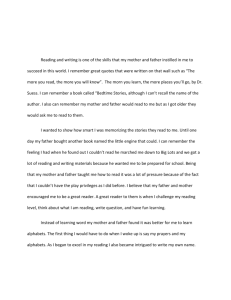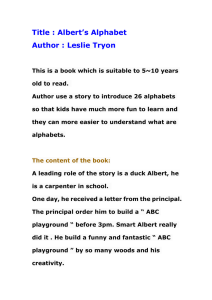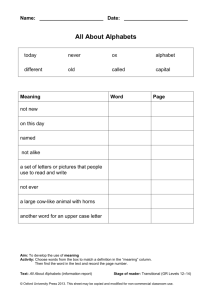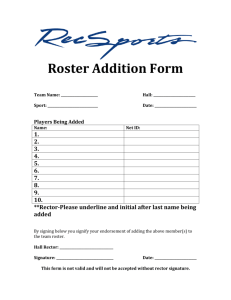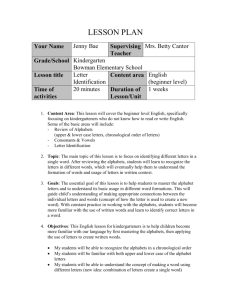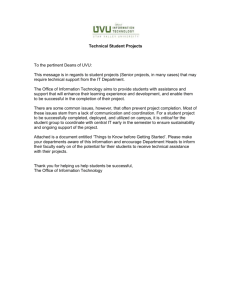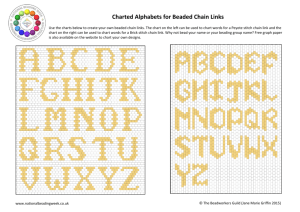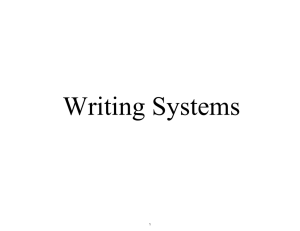Data
advertisement
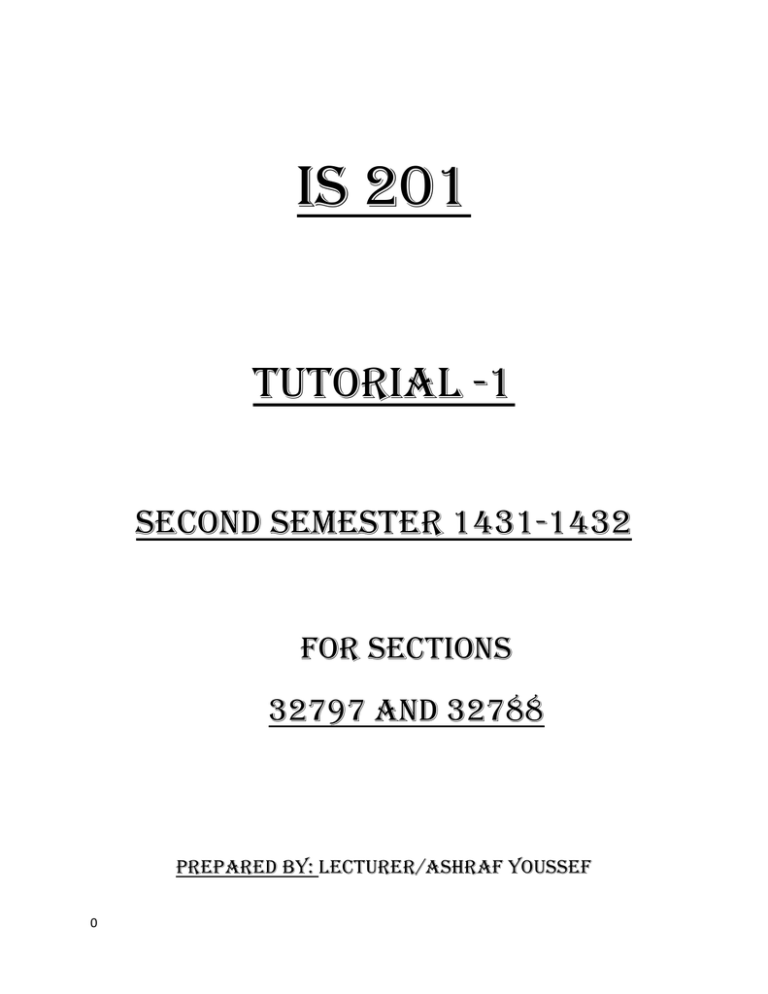
IS 201 Tutorial -1 Second Semester 1431-1432 For Sections 32797 and 32788 Prepared by: Lecturer/Ashraf Youssef 0 Q1. Differentiate between data and Information. Give two examples to demonstrate your answer. Answer: Data are raw facts or distinct pieces of information, usually formatted in a special way. Information is a collection of facts organized in such a way that they have additional value beyond the value of the facts themselves. An example to demonstrate the answer: Data: Bi-Hourly readings of temperature of the day for in degree Celsius: 16, 17.5, 19, 22, 24 and 20 Information: Maximum temperature today is: 24 Minimum Temperature today is: 16 degree Celsius. So the mere readings of the thermometer are raw facts, and by processing (manipulating) such readings by applying the Min and Max functions to such data, we deduced useful information Another example: Data: The grades of students in the Final Exam for course IS 240: 32, 12.5, 22, 19, 30, 38, 40, 5, 13, 26, 19, 35, 29, 26 and 18. Information: The average of the class is: 24.3 The median of the class is: 26 points So the marks of the exam are raw facts, and by processing (manipulating) such marks using the function Average and Median respectively, we were able to deduce useful information. 1 Q2. Give eight examples of Alphanumeric data. Answer: Alphanumeric data is a combination of alphabets and/or numbers and/or special characters. Examples are: (1) Ashraf (all alphabets-Upper case and lower case) (2) F16 and M60 (a combination of Upper case alphabets and numbers). (3) Selim-1 and Mohammed-6 and Dbase-3 and Mazda-6 (a combination of Upper case and lower case alphabets, special characters and numbers) (4) 1234 and 99 (numbers only) (5) *1410# and *166# (a combination of numbers and special characters. (6) toyota (lower case alphabets only) (7) KSU and IBM and ROM and RAM (Upper case alphabets only) (8) Rooster.aac and Sizzlin’.mid and Streetwise.mxmf (a combination of upper-case and lower-case alphabets as well as special characters) Q3. Give one example of Audio data and another example of Video data. Answer: Example of Audio data: The mobile phone ringing tones. Example of Video data: a Video clip on U-tube. Q4. List six (6) characteristics of valuable Information. Answer: Six characteristics are: Accessibility, Accuracy, Completeness, Security, Simplicity and Verifiability. 2 Q5. Elaborate on the following statement: ” Health Information need to be accurate, complete, and available in a timely manner ”. Answer: The health information about an individual (patient for example)in a health information system need to be: (1)As accurate as possible (e.g. patient’s age and sex) (2)As complete as possible (e.g. all symptoms of a disease or history of a disease need to be stated) (3)Should be available in a timely manner (e.g. information about a patient’s drug allergies need to be available before carrying on a surgical operation). Q6. Read the following narration then respond to the multiple choice question(MCQ)that follows it. Narration: “If the rector of the university requested Complete Monthly Evaluation Reports(CMERs) from the deans of ten university colleges and eight College deans turned in twelve (12)(CMERs) each for his corresponding college, the ninth college dean turned in eleven (11)(CMERs) and the tenth college dean turned in ten(10) (CMERs). Question: In your opinion, the overall information submitted to the rector was: (1)Relevant but not complete. (2)Complete but not relevant. (3)Neither Relevant nor Complete. And Why? 3 Answer: A complete information contains all the important facts. Since the request of the university rector is to submit complete Monthly Evaluation Reports, for the whole year then the information submitted by eight of the deans were both complete and relevant. Complete because the reports covered all months of the year and relevant because they submitted Monthly Evaluation Reports and not any other sort of reports. The other two college deans submitted relevant reports, but for only ten and eleven months respectively, and this means that the submitted information was relevant but not complete from their side. Accordingly, judging the overall information submitted to the rector, we can say that it was relevant but not complete. Hence , choice (1) best fits the answer. Q7. Mention four(4) characteristics of an Information System. Answer: The four characteristics are: (1)Input: the activity of gathering and capturing raw data (2)Processing: converting or transforming data into useful outputs (3)Output: production of useful information, usually in the form of documents and reports (4)Feedback: output that is used to make changes to input or processing activities 4 Q8. Mention one example for a Manual Information system and another example for a Computerized information system. Answer: Manual Information System: Example: developing patterns and trends on graph paper for stock analysis Computerized Information System: Example: using program trading to track the market and trade large blocks of stocks when discrepancies occur Q9. What are the components of a Computer –Based Information system? Answer: The Components are: (1)Hardware (2)Software (3) Procedures (5) People (6)Databases. (4)Telecommunications Q10. Mention two common types of Information systems used in Business Organizations. Answer: Two Common types include: (1)Management Information Systems. (2) Decision Support Systems. 5
